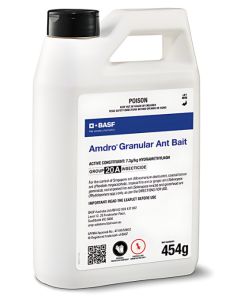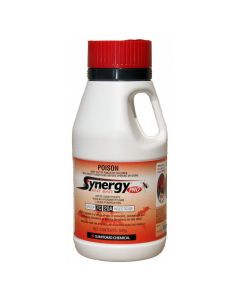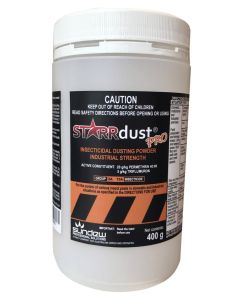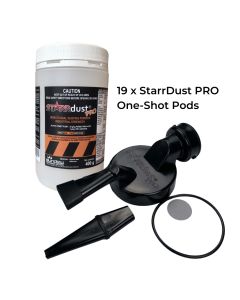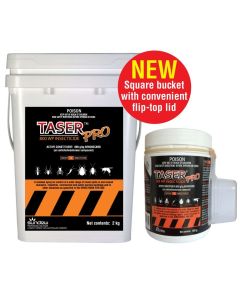Green Headed Ant
Green Headed Ant
Scientific name: Rhytidoponera metallica
How to identify green headed ants
The green-headed ant, Rhytidoponera metallica, often simply referred to as the green ant, or sometimes the green-head ant or the metallic pony ant, is a metallic-green coloured ant, generally 5–7 mm in length, that can be found throughout Australia, particularly in urban and suburban areas. It is often confused - verbally, not visually - with the weaver ant of northern Queensland, Australia, where it is also referred to as the green ant.
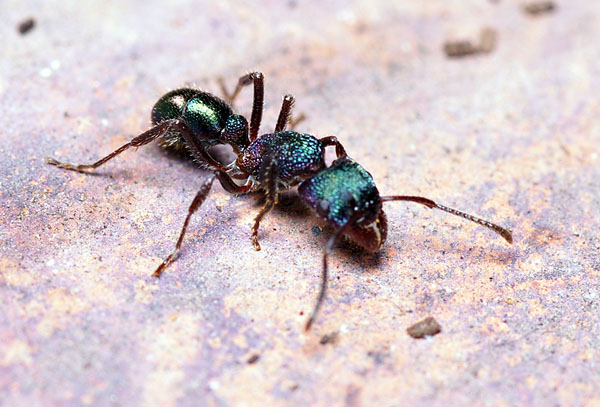
Where are green headed ants commonly found?
Greenhead ant nests are usually found on lawns, in gardens, around pathways under logs and rocks particularly in urban and suburban areas. These ants are seldom found nesting inside houses. They prefer animal and vegetative derived protein as a food source.
Why are green headed ants considered a pest?
The green-headed ant is an infamous nuisance for suburban and urban dwellers in Australia. The ants generally build their nests underground beneath most types of grasses and often go unnoticed until someone, or sometimes some animal, is bitten. The actual ant's bite itself is often unnoticeable, however the venom that the ant injects via a sting, in its abdomen, initiates a sharp burning sensation beginning seconds after the sting and lasting up until any time from five minutes to as long as two hours or, with some subspecies, up to a day. The venom is generally harmless but if a large number of stings are received at once the overwhelming amount of venom injected into the body can sometimes render a small child physically ill for a few hours.

What is the biology and lifecycle of green headed ants?
The life cycle of an ant consists of four stages: egg, larva, pupa and adult. Eggs are small and ovoid in shape. Fertilised eggs become females (usually sterile workers), but at certain times also fertile females (which can potentially become queens). Unfertilised eggs become males.The larva is a white grub with a narrow head. Adult workers feed the larvae and after sufficient feeding and several moults, the larva pupates. The pupa is similar in shape to the adult but is usually soft, white and inactive. In some species the pupa is protected by a silk cocoon. Once the adult emerges, its cuticle hardens and darkens. The development from egg to adult may take from six weeks to very long periods, depending on the species, season and food availability.
Management Tips For Green Headed Ant
Effective control depends upon a number of factors:
-
The particular species involved,
-
The location of the nest site(s) and,
-
The degree of concern they are causing the occupants.
It may be easy to control a colony with a single queen (Camponotus spp), or difficult in the case of species with multiple queens and multiple “homes” and which do not display aggression to workers from other nests (Argentine ants, Odorous house ants and Pharaoh’s ants). That is why correct identification is essential before you begin your campaign.
Ant granules were perfect for the control of some ant species to exterior areas. Most insecticide manufacturers suggest that a two-pronged approach with both baits and liquid sprays be used in order to obtain best results. These manufacturers all supply bulletins with complete instructions on how to use their products. The product labels and these bulletins should all be studied before using any of the materials.
The basic rules for the use of bait are:
-
The basic premise is that bait should hopefully be consumed within 1 to 2 days when their palatability and moisture content are highest. The ants should die within 3 to 4 days.
-
Correct identification – by knowing the species, you can choose the right bait for the job and can also help you find their feeding, trailing and nesting sites.
-
Find the trails – you must place the bait where the ants are otherwise you are wasting time and bait. If the ants aren’t active at the time, you can pre-bait first with non-toxic foodstuffs. This will help you determine where the ants are feeding and what type of food they prefer.
-
Choose the correct bait formulation, they may prefer sweet foods or protein based materials. Sometimes the same species will change food preferences depending upon seasons or other conditions. Therefore, you need to have a range of baits in your kit bag. If you just put a small blob of each bait in the ant trails, you will very soon find which they prefer.
Some key rules to observe are:
-
Place the bait as close as possible to ant trails which are usually near feeding or nesting sites.
-
Place adequate amounts of bait out to ensure that they will continue to feed until your next visit. By placing the bait in purpose designed “ant cafes,” you will extend the life of the bait.
-
Avoid food competition by asking the client to remove available foodstuffs and liquids.
-
Avoid placing gel baits near sources of heat as the gel matrix may become liquefied and moisture loss may increase. Also, avoid placing them on dry or porous surfaces which may increase water loss and make them less palatable to ants.
-
Some baits lose their potency after only a few days exposure to sunlight. Make sure that you know which they are and replace them as required.
-
Some granulated baits lose their potency around three months after the container has been opened. Make sure that you write on the container the date on which it was opened.
-
A common piece of advice is that you mustn’t place baits on surfaces that have or will be treated with liquid or powder insecticides. Studies carried out by some researchers have indicated that this is not the case and the baits are still palatable. Some pest managers have stated, “Why waste money by applying two formulations?” and that is probably a good rule to live by. You may be able to control the ant problem without the use of insecticidal sprays and dusts but, all manufacturers recommend that bait applications are supplemented by the use of such formulations when treating free standing buildings. These insecticidal barriers will serve to prevent future ant activity to the interior.
The basic rules for the use of residual insecticide sprays are:
-
Non-repellent formulations are considered superior to repellent formulations e.g. synthetic pyrethroids, as the ants will track through the non-repellent insecticide unknowingly. Examples of non-repellent actives and formulations are Bendiocarb (Ficam), Fipronil (Termidor), Indoxacarb (Arilon), Chlorfenapyr (Phantom).
-
The sprays should be applied as a barrier to the base of foundation walls, fence lines and garden beds.
-
Re-application of the sprays may be necessary after rain.
-
Insecticidal dusts should be applied to roof voids where practical.


